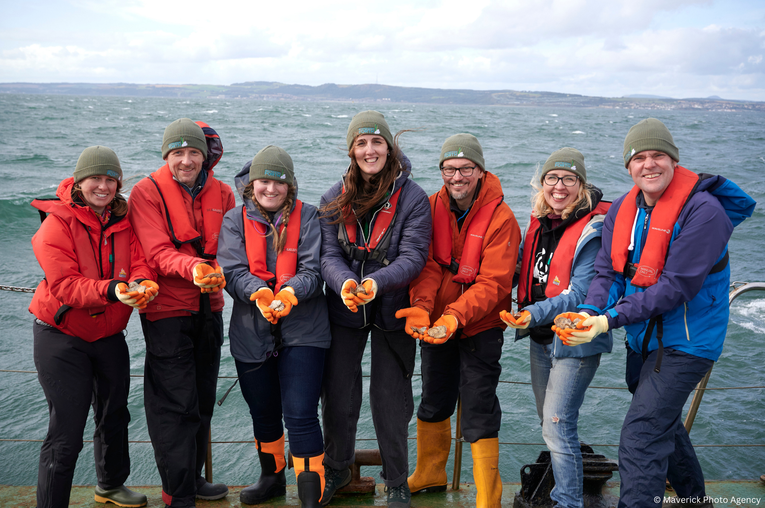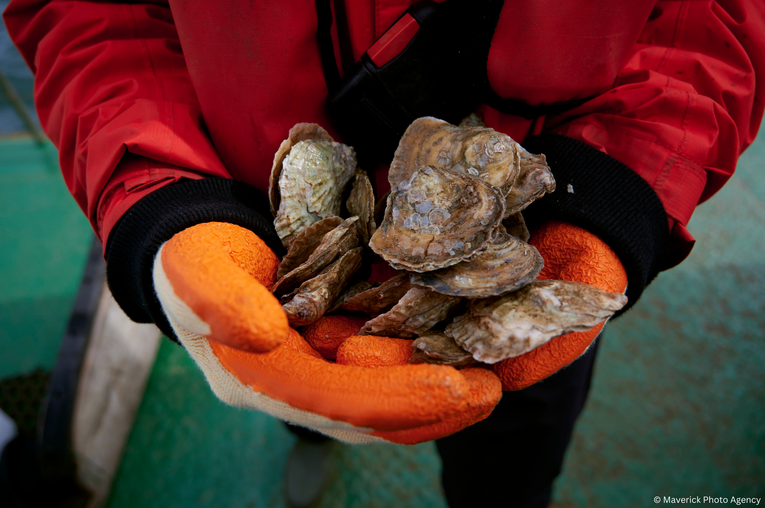
Native oysters return to Firth of Forth after 100-year absence
The Restoration Forth project reached an exciting milestone, successfully returning native oysters to the Firth of Forth in Scotland for the first time in a century.
Restoration Forth is a major marine restoration programme working with communities to restore seagrass habitats and native oyster populations in the Firth of Forth.
Why oysters?
Native oysters provide a wealth of ecosystem services, enhancing biodiversity and improving water quality and clarity by filtering up to 200 litres of water a day.
Historically, native oyster beds spanned 20 miles in length and six miles in width, covering approximately the size of modern-day Edinburgh. They were arguably the largest in Europe at the time, but human pressures of over-exploitation and industrial pollution resulted in the beds completely disappearing by the early 20th century.
Staff, volunteers, and partners were joined by Màiri McAllan, Cabinet Secretary for Transport, Net Zero, and Just Transition for the deployment process.
From a vessel in the Firth of Forth, the first of 3,000 oysters were returned into the sea.
Caitlin Godfrey, Shellfish Engagement Officer said: “It’s so exciting that the first native oysters are now in their new home in the Firth of Forth.
"Alongside seagrass meadows, they will play a crucial role in bringing the estuary back to life and transforming the future of this coastal environment for people and nature.”

Credit: Maverick Photo Agency
How were the oysters prepared for the deployment?
The project involves moving adult oysters from a donor site in Little Loch Broom, on the North West coast of Scotland, to the Firth of Forth on the East coast. When moving a species between two geographically distinct environments, we must prevent the spread of invasive non-native species and disease - this is biosecurity.
Our biosecurity protocol includes the screening and removal of any attached plants and animals, as well as chemical cleaning. Oysters are then sorted and counted into clean tanks where they remain for five days before they can be released on the boat.

Emmy and Caitlin deploying the oysters
Credit: Maverick Photo Agency
What’s next?
This is a key project for the Marine Conservation Society to be involved in, relying in equal parts on scientific research and community outreach.
Kirsty Crawford, Learning & Community Engagement Manager said: “Local people truly are at the heart of this project and so many volunteers have been directly involved in the practical elements. By the end of the month, we will have supported over 85 people in biosecurity training and oyster ecology on site at Heriot-Watt University and on overnight trips to Ullapool to collect the oysters.”
By the end of the funded Restoration Forth project in 2024, four hectares of seagrass and 30,000 native oysters will have been restored.





